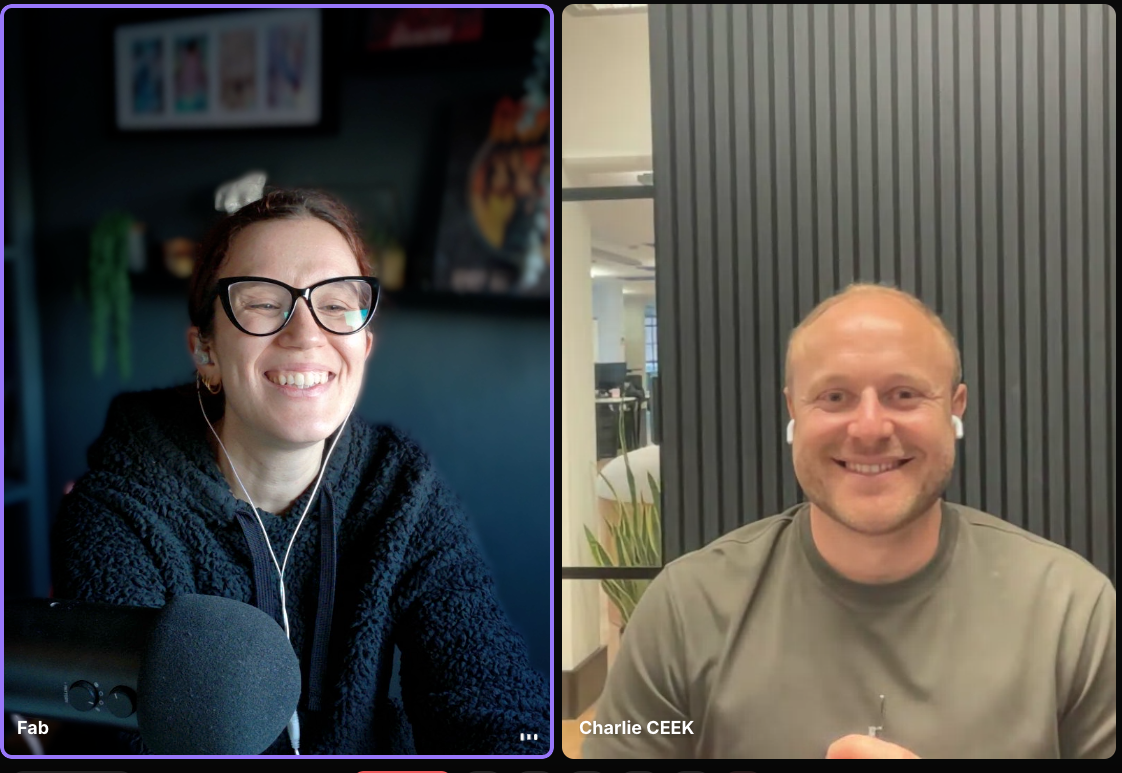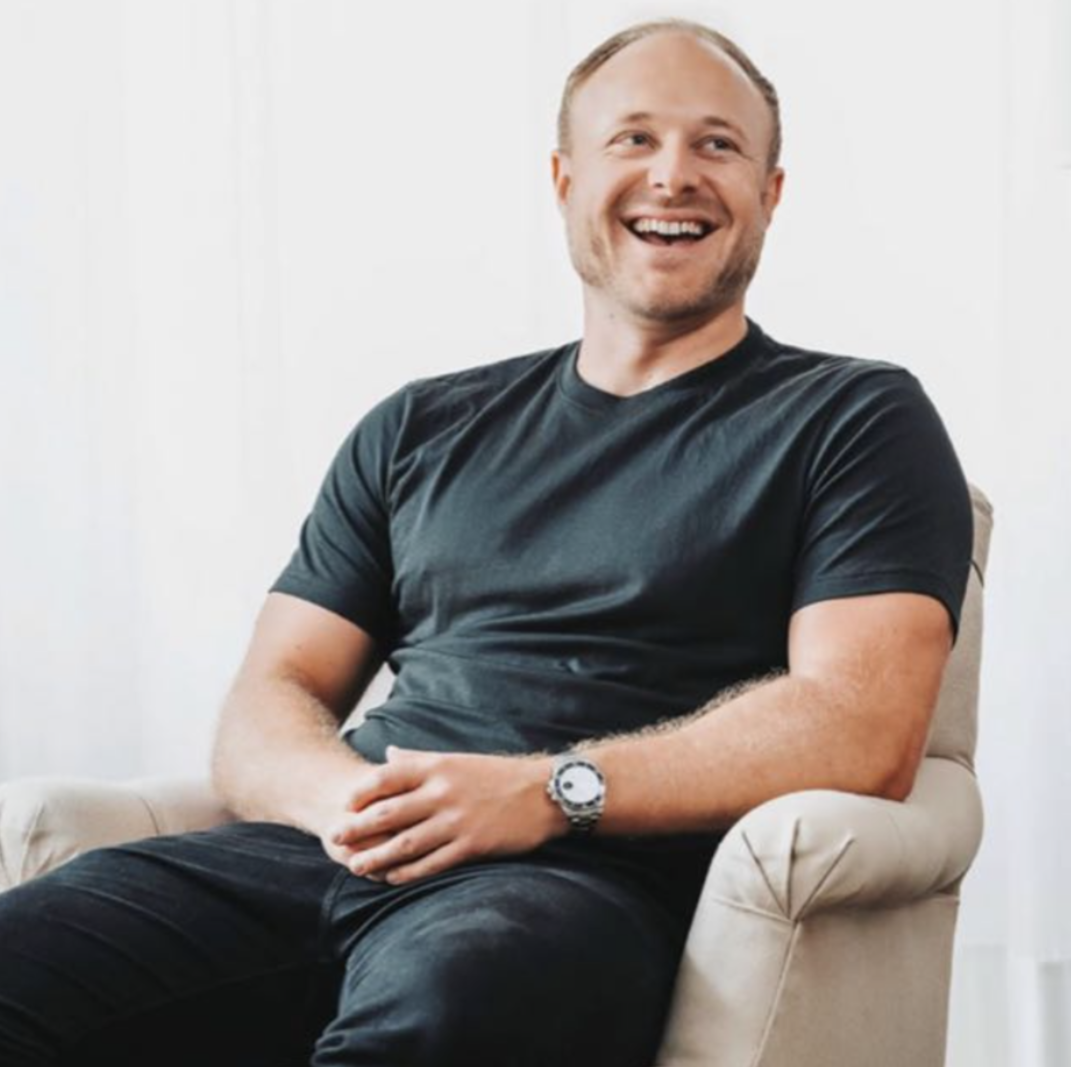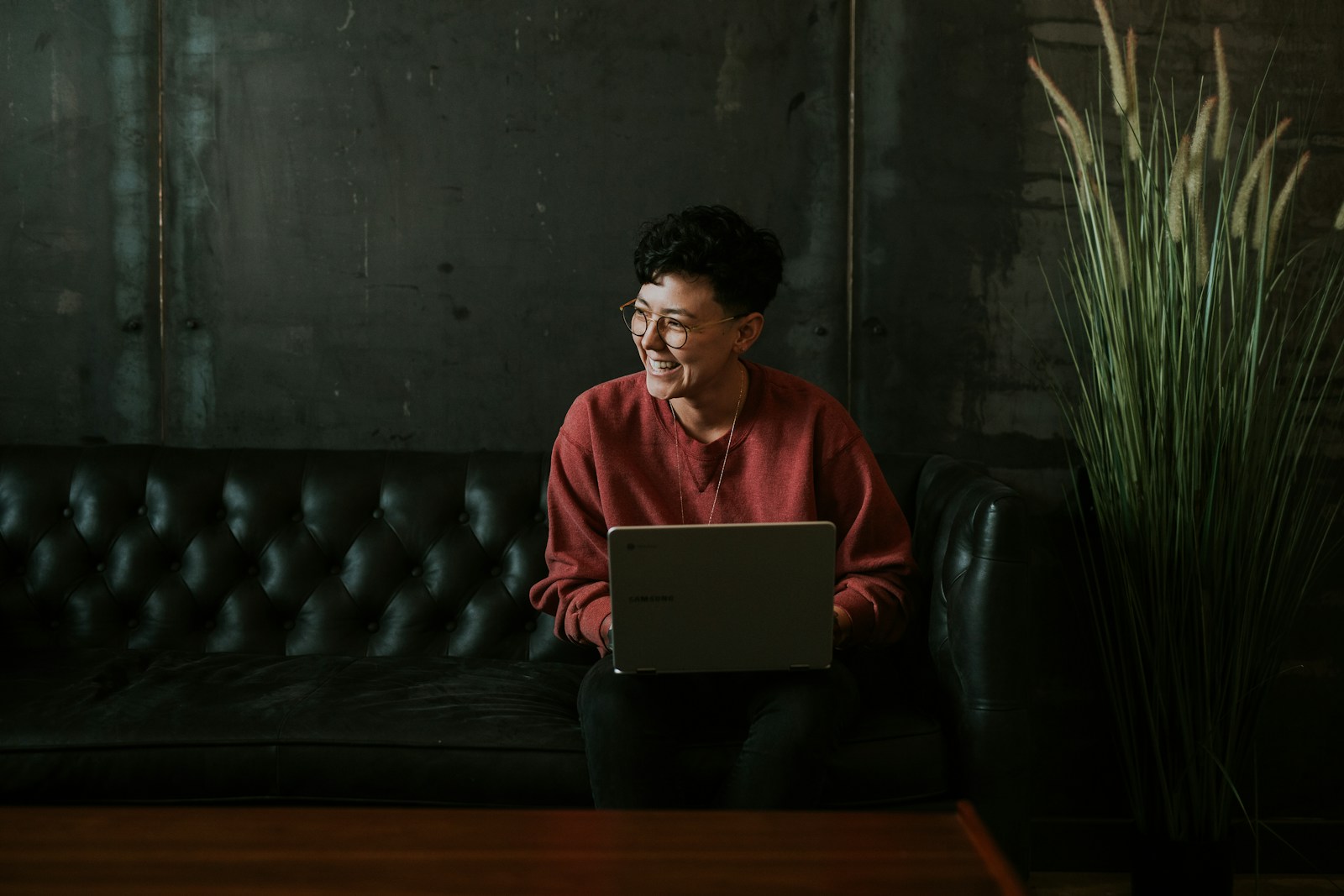Let’s go “Behind the Campaign” with Charlie Terry from CEEK Marketing, one of Londons biggest Digital Marketing Agencies. In this series, we’ll be sitting down with the masterminds behind some of the most brilliant brand campaigns out there, uncovering what fuels their success, the lessons they’ve picked up, and the unexpected twists along the way.
And who better to start with than Charlie Terry. From humble beginnings in London’s hospitality scene, where he built connections with some of the city’s biggest movers and shakers, Charlie’s grown two powerhouse agencies that work with brands like Gail’s, The Savoy, and Disney. Think “jack-of-all-digital-trades” but with a knack for omnichannel magic.
In this chat, Charlie takes us behind the scenes of his journey, spilling the beans on everything from epic client campaigns to the highs and lows of running multiple agencies.

Looking back at Charlie Terry’s career
Your journey began in hospitality and grew into founding multiple agencies. Could you walk us through how those early experiences shaped your approach to marketing today?
I think the hospitality industry, as you say, you learn so many skills. Obviously, the people side is massive. That’s probably the main takeaway that I had. You’re dealing with a lot of different types of people, which is a huge thing.
What was interesting about how I actually got into marketing was that we were in the hospitality space and doing events – working with restaurants, bars, hotels. But actually, what we didn’t realise is that we were kind of a marketing agency. That’s essentially what we were doing, but we didn’t know it because we were marketing these places, pushing our own events, and that was part of the business I owned prior. We eventually found that the thing we were really good at was the marketing itself. I was drawn to that side more than the output or event itself.
All our clients in the beginning were in hospitality, but we diversified quite quickly sector-wise, within a year or two. And I’m glad we did, because otherwise we’d have been dead in the water during COVID. But even today, we still have a passion for hospitality. It’s the people in that industry and the fact that it’s the ultimate service industry, you know?
They’re there to create experiences and memories. It’s an amazing sector to be a part of – even now as an agency.
You’ve founded multiple agencies. What’s one of the biggest lessons you’ve learned from these experiences? Did you apply this lesson consistently, or did it lead you to do things differently in subsequent agencies?
Yeah, it’s a good question. Every time I’ve been involved in a new venture, one of the things that I’ve done differently is I’ve had co-founders in all my other ventures, whereas at CEEK, I was a solo founder and owner.
Not that I think it was a bad thing at the time because it forced me to learn everything – from the marketing side that we were actually doing, to finance, people operations, and just business in general. I had to become more commercial.
So having that experience of ultimately having to do everything, and honestly, having the naivety of doing it alone… anyone in their right mind who’s trying to start a large agency should not do it alone if they can help it. I wouldn’t recommend it. But after that, I brought in co-founders in the next businesses I was involved in. In the talent management agency, for example, my co-founder had a very different skill set from mine.
Now at CEEK, the team’s skill set is diversified, and they complement each other well.
When you first start, you can fall into the trap of hiring people who are very similar to you because you want to replicate yourself to do more of what you’re already doing. But that’s a trap.
Charlie Terry
What you actually need to be doing is saying, ‘What can I not do? Where should my time not be?’
That’s the main difference between today and eight years ago when CEEK started. At District, a newer venture, we’ve taken this learning forward and are very clever in how we hire, regularly bringing in people with complementary skill sets. And that’s not just about skills but also about personalities. As a service-based business, you’re really selling the knowledge of the people in your business. So the big lesson is hiring the right people with complementary skill sets. I didn’t really have that nailed down when I first started.
Insights from Marketing Campaigns
Partnering with brands like Gail’s, The Savoy, and L’escargot, you’ve had a hand in campaigns across diverse sectors. Could you take us through the creative process behind one of these standout campaigns—perhaps from brief to execution?
Yeah, sure, let’s walk through that. CEEK takes a slightly different approach depending on the client’s size. Like you said, we work with large household names and multinationals, but also small, independent restaurants like L’Escargot. I was actually there last night! So, I’ll talk about a campaign there.
When we first start with a client, it’s a bit different depending on whether they’re an existing or new business. But usually, they’re coming in for what we call an omnichannel strategy. It’s rare for our clients to say, ‘We just need this one campaign on this one channel.’ Sometimes, they come to us with an immediate problem—like not showing up on Google—and we’ll address that. But more often, they’re looking for commercial goals, like increased revenue, brand awareness, or footfall.
We start with an eight-step strategy process, which is really in-depth. This approach helps us prevent any potential holes in the bucket, so to speak, and ensure everything is set up for conversions. Even if the outcome is something like an influencer campaign or a blend of paid media, SEO, social, and email, we need to look at the whole landscape first to ensure we’re capturing everything.
With L’Escargot, one recent campaign was around launching some tote bags. They were really cool, and it wasn’t the core business, but it was a content opportunity we wanted to shout about to their very engaged community. We had recently collaborated with Nike, where they launched a shoe called ‘Escargot,’ which was a fantastic moment. Off the back of that, we wanted to keep the momentum going.
So, we brainstormed internally and decided on a partnership between a drinks brand, L’Escargot, and two influencers who had appeared on the show Emily in Paris. These two British girls had moved to Paris, cameoed on the show, and were already fans of the restaurant. They used to come to L’Escargot as guests before moving to Paris, so it was a very natural collaboration.
We created this ‘content moment’ for them, which worked beautifully. They got to generate content they loved, and the restaurant saw a great follower increase that wasn’t even our primary goal—it was about the content itself and keeping things on-brand.
Overall, campaigns like these remind us why we do it: to understand the purpose behind each campaign. If it’s for revenue, great. But sometimes it’s for content or showcasing something on the client’s channels, and that can drive growth in a different way. With partnerships, we’ve seen tremendous growth over the last year by combining influencers with complementary brands, and that’s something we’re excited to keep pushing forward.
Embracing an Omni-Channel Approach
What’s a key piece of advice you’d offer marketers today to elevate their campaign effectiveness, particularly when working across multiple digital channels and using an omni-channel approach?
I’m sure you have people in your community at all different levels and dealing with different client sizes. So, it’s crucial to keep that in mind. For clients with smaller budgets or resources, it can be tough to cover every channel.
The first thing I’d say is to really nail down your client’s demographics. Reverse engineer that—where is their audience living online? If you’re not there, maybe your customers are. You also need to decide which channels are first-party or owned, like a brand’s own social media channels, and where you might rely on third parties, such as influencers or partnerships.
One thing we see a lot is that a brand may not want to post daily on TikTok or might be hesitant to dive into a new platform, particularly in the luxury space. But sometimes, your customers are already there, shaping your narrative on that channel. So, having an omni-channel approach doesn’t mean you have to be actively posting everywhere. You can use creators or third-party sources to establish a presence where you’re not directly active.
An omni-channel approach also helps to de-risk. For example, if you’re overly reliant on TikTok in the US, there’s always the chance that platform could be restricted. With an omni-channel approach, you’re protected because you’re not dependent on just one channel.
Efficiency is another big reason. Take paid search, for instance—people always focus on Google, but you could be missing cheaper search volume on platforms like Bing. It’s worth considering whether you’re tapping into the full volume on other channels, as it might save on cost-per-acquisition.
Finally, the customer journey isn’t linear. When I’m making a significant purchase, I’ll go through multiple touch-points: I might search on Google, get sent a link on WhatsApp, check their Instagram, look at tagged images, location tags… as marketers, we can curate all those moments to boost positioning and engagement with the user.
So, an omni-channel approach achieves three things: it de-risks, increases ROI and efficiency, and aligns with the non-linear customer journey. Customers will engage on multiple channels, so being there, even passively, makes sure your brand is part of their path to purchase.
You work across different sectors – which may not serve best for a cookie-cutter approach. How much does the strategy approach change for each client?
I love that question. So, it’s definitely different for every client, as in the advice we give varies. That said, certain principles remain consistent. For example, the way you get to the top of Google is the same for the fashion industry as it is for home design. There are standard rules per channel that apply across sectors.
But the real benefit of working across multiple sectors is that we can take ideas from one industry and bring them into another. For instance, we might see something innovative in fashion and adapt it for a hospitality client. It’s almost the same strategy, but it’s new to that sector, where others aren’t doing it.
In hospitality, like in the five-star hotel market in London, there’s often an ‘echo chamber’ effect. Everyone’s using the same photographers, influencers, and tactics. When we stepped back into that space after COVID, we thought, ‘Let’s just do something completely different from what everyone else is doing.’ We took inspiration from other sectors, like fashion or wellness, to offer fresh ideas.
I was advised over and over when I started the agency to specialise in a single sector. People said, ‘You need to niche; you need to be a specialist.’ But in my view, we dominate the specialists because we see the wider market. We get inspired by multiple industries and can adapt ideas across different clients.
Our strategy process itself is the same for each sector.
- First, we conduct a demographic analysis specific to each client’s target.
- Then, we do both direct and indirect competitor analyses. Direct competitors offer the same product, while indirect ones target the same consumer but with a different product.
- Then, we look at seasonality. For example, with our luxury gym client, BXR, new year memberships are huge, so we’ll focus on maximising that. Meanwhile, with a restaurant like L’Escargot, people aren’t typically drinking red wine and eating steaks in January, so we’d shift our approach there.
- Lastly, we conduct a platform analysis. We’re partners with Google, Meta, Pinterest- you name it. When we discuss with these platforms, they provide data on whether a particular audience is active there, which varies by industry.
So, to sum it up, the process remains the same, but the outcome is unique to each client’s needs and industry specifics.
Parting Advice for Marketers
With such a successful career spanning over a decade, you may have experienced setbacks when building and growing your agencies. Any advice for others in similar positions facing challenges in agency growth and client management?
I want to give you a different answer than before, because the biggest challenge I have today is actually the thing I’ve learned the most over the past eight years—it’s people. As an agency founder, our purpose is to deliver outstanding results for our clients, and to do that, we need an incredible team who are always growing and evolving with this fast-moving industry.
People often say, ‘The marketing world moves quickly,’ and it’s true.
Charlie Terry
If you take a break from Google Ads, for example, and come back after a year, it can look entirely different. SEO is changing faster than ever with AI, social media algorithms are evolving, and vertical video formats are shifting with TikTok’s influence. But I can tell you that businesses often grow faster than people, and they should. That’s a challenging concept to accept.
If you’re planning on staying in a business long-term or working with clients over a long period, you need to grow and adapt as an individual. Some of the most successful people I’ve worked with stick around, honing their craft and becoming specialists in areas rather than jumping from one thing to the next. I see a lot of people, often younger generations, bouncing from job to job, but sometimes staying put helps you really gain traction.
So, for anyone in an agency or even in-house, my advice is this: businesses grow faster than people, so you need to reinvent yourself every couple of years to stay aligned with the business and your clients. I’m a completely different operator than I was four years ago – and four years before that was also different.
When I started in marketing, I’d be on every platform’s blog daily, learning every single change. Now, I rely on my team’s curiosity to bring that information to me as I shift into a more strategic role.
Finally, always keep in mind the commercial outcomes. If you’re a marketer and you forget that the end goal is commercial success, then you’re missing the mark. Whether you’re pitching, managing clients, or working on promotions, remember that your work has to ultimately drive results. That’s the key difference between good and great marketers.
Curious to dive deeper into Charlie’s world? Find out more about his work over on the CEEK website and connect with him on LinkedIn for even more marketing insights.
Want more? Here's your invitation from the school ⤵️
We don’t teach you how to do more. We teach you how to do it better.
You don’t need more hacks. You need smarter foundations, better systems, and clarity that cuts through the noise.You got into this to make a difference. Let’s help you do that, with strategy and a whole lotta heart.
➡️ Find out how we can help via our all-access pass.



